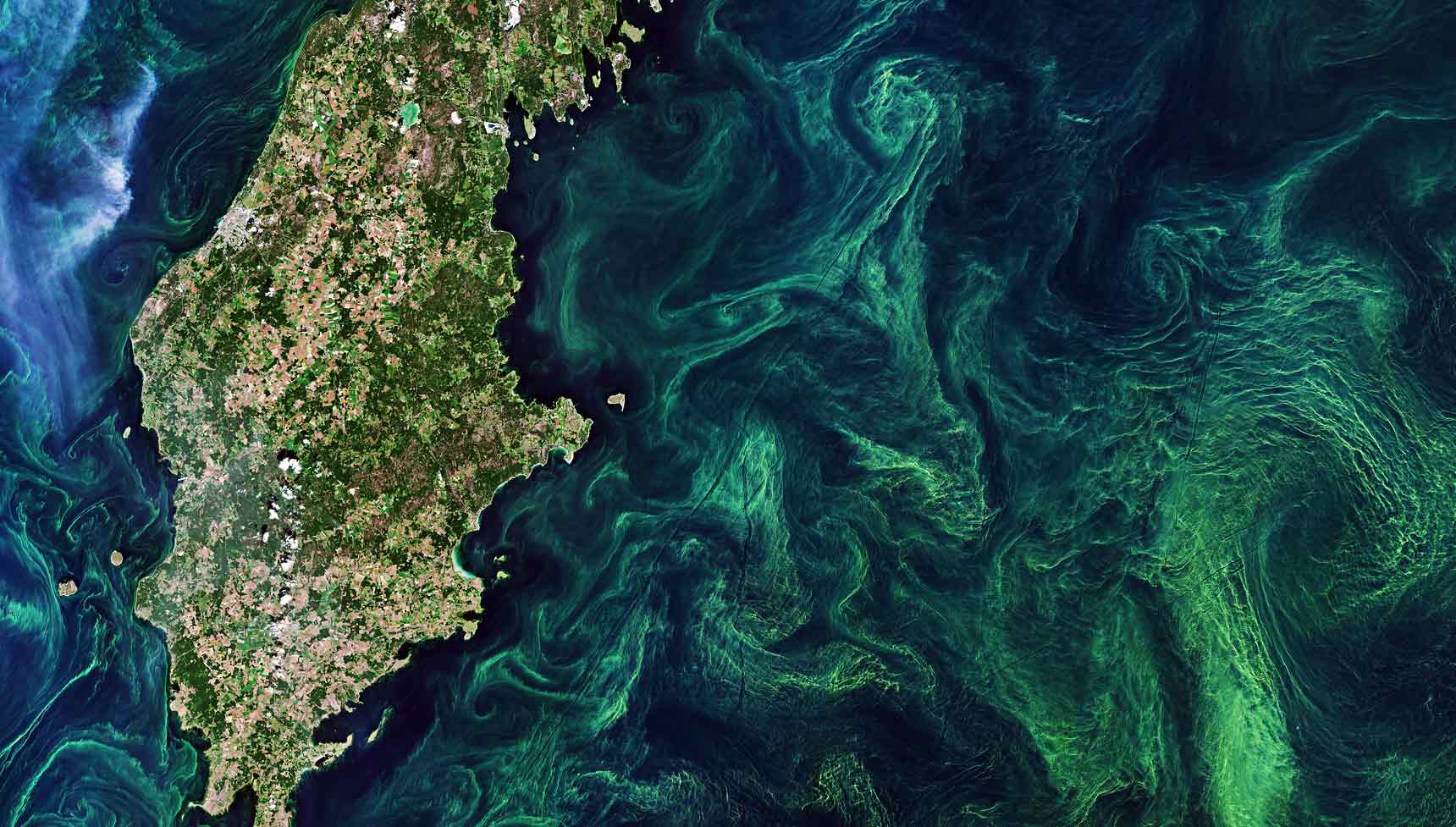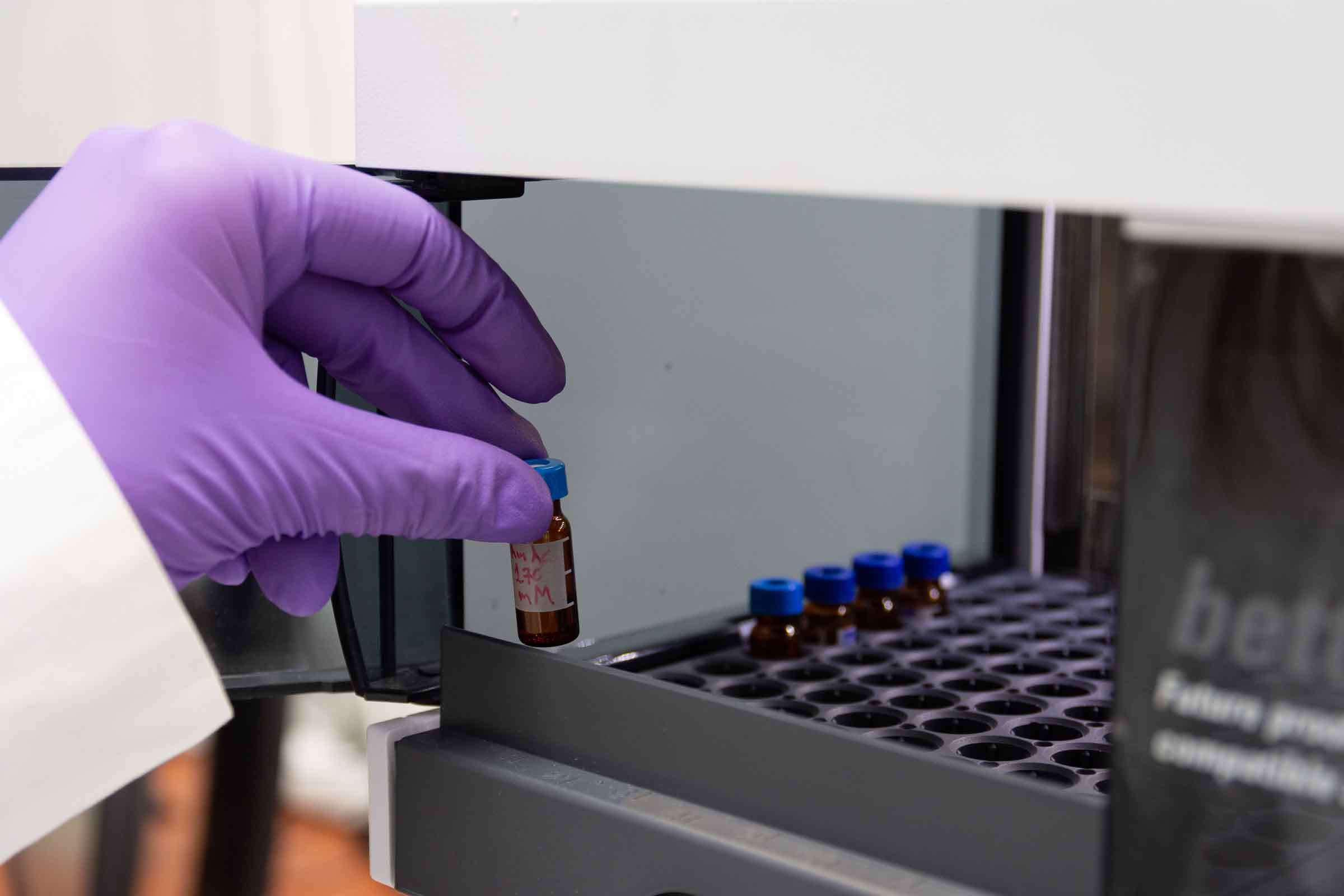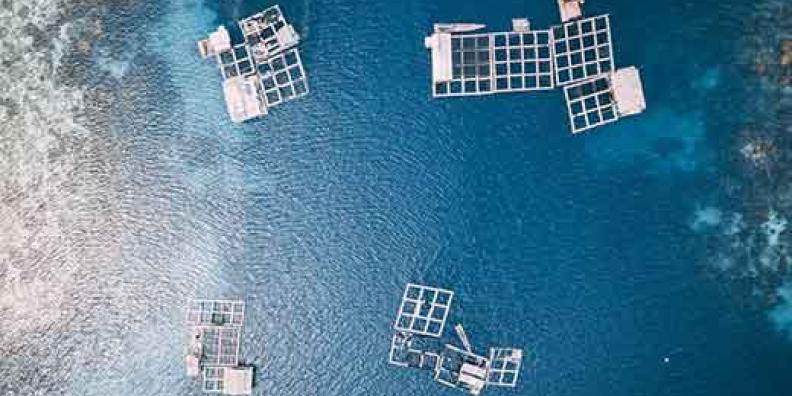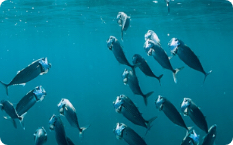This month, EMBRC was proud to be highlighted in AgroServ’s Chronicles.
Read their interview with Davide Di Cioccio, our access manager, to uncover how EMBRC is leveraging marine biology to address the intertwined challenges of agriculture and water within AgroServ’s network. Explore innovative solutions such as biostimulants, biofertilizers, and integrated aquaculture for resilience. Unveil our advanced services, like the Lipidomics Lab and the Bioanalysis and Biotechnology Lab, driving research towards a sustainable future.
A MEMBER IN THE SPOTLIGHT:
European Marine Biological Resource Centre (EMBRC)
Marine biology and agroecology are traditionally sectors which have never been much in contact. However, leveraging the expertise and insights from marine biology, agriculture can create innovative solutions that enhance resilience, sustainability, and productivity in the face of environmental challenges.
In this edition of our newsletter, we have the privilege of interviewing a key member of the European Marine Biological Resource Centre (EMBRC) team. EMBRC-ERIC is the European research infrastructure dedicated to advancing marine biology and ecology while promoting blue biotechnologies and is among the 12 members of the AgroServ project consortium. With a network spanning 70 marine stations across 10 European countries, EMBRC provides access to essential services, facilities, and technology platforms for robust and cost-effective research in marine sciences.
Our interviewee sheds light on EMBRC’s contributions to exploring marine biodiversity,
accelerating knowledge in ocean science and fostering a sustainable relationship with the ocean. The main question is quite straightforward: how is EMBRC linked to agroecology?
Interview with Davide Di Cioccio, access manager at EMBRC HQ

For the last 5 years Davide Di Cioccio has been working at EMBRC headquarters in Paris, France. Previously, he worked in projects close to EMBRC, and in particular on Transnational Access programmes.
“With a background in biology and biodiversity conservation, I transitioned from research to project management within EMBRC. This decision was made to cultivate my interest in connecting researchers to collaborate, rather than doing science myself in academic research, acknowledging the value of collaboration in driving scientific progress.”
THE BIGGEST THREATS TO WATER SYSTEMS CAUSED BY MODERN FARMING
Modern farming poses several significant threats to water systems.
According to Di Cioccio “eutrophication, or nutrient pollution, stands as the most substantial threat”. Excessive fertilizers, manure, and organic matter from farms can wash into waterways, especially during heavy rainfall. When these nutrients reach the ocean, they can fuel the growth of algae, creating algal blooms. These blooms can in turn deplete oxygen levels in the water, leading to dead zones where aquatic life cannot survive.

@Flicker - Satellite view of an algal bloom
Chemicals used in farming, such as pesticides and herbicides, can be carried away by rainwater, eventually reaching the ocean. These chemicals can be toxic to marine organisms, interfering with their development and reproduction.
The widespread use of antibiotics in livestock farming can result in these drugs entering waterways. This can contribute to the development of antibiotic-resistant bacteria, posing risks to both human and animal health.
Additionally, the rapid expansion of aquaculture also poses threats to marine environments. Escaped fish from aquaculture facilities can disrupt native species by competing for resources and potentially introducing diseases, also potentially affecting the genetic diversity of natural populations. Furthermore, leftover fish feed and waste from aquaculture operations can add to nutrient pollution and deplete oxygen levels in surrounding waters.
EMBRC’S RELEVANCE IN THE FIELD OF AGROECOLOGY
Collaboration between marine biologists and agricultural researchers can lead to the development of integrated approaches and create connections between marine and terrestrial ecosystems.
“Services for marine biology can contribute to solving the issue of resilience in agriculture in different ways”, affirms Di Cioccio. For instance, marine algae contain valuable compounds like cytokinins, auxins, and polysaccharides that can boost plant growth when used as biostimulants. Marine bacteria and fungi can be used as biofertilizers to enhance soil fertility and nutrient availability for plants. Chitin, present in crustacean shells, can be processed to aid germination, promote plant growth, and serve as a fungicide.
Certain marine species like fish and crustaceans can be integrated into pest management systems in agriculture. For instance, introducing specific fish species into rice paddies can naturally regulate pest populations, reducing reliance on chemical pesticides and fostering ecological balance. On the same front, extracts from sea cucumbers and starfish exhibit insecticidal and fungicidal properties, offering potential solutions for pest control in agriculture.
Exploring integrated multi-trophic aquaculture (IMTA) systems, which cultivate fish, shellfish, and seaweed together, could offer a sustainable approach to food production. Waste from one species serves as nutrients for another, creating a more resilient production system.
Moreover, marine organisms harbour genetic traits crucial for climate change resilience: genetic material from mangroves or seaweeds could confer resistance to saltwater stress in crops; proteins sourced from polar fishes could help crops withstand freezing temperatures. Additionally, algae and bacteria possess bioremediation capabilities, capable of cleansing pollutants from water bodies and treating agricultural runoff to mitigate water pollution.
WHAT HAS BEEN DONE TO IMPROVE THE HEALTH OF OUR WATER ECOSYSTEMS
One significant advancement is precision agriculture, which uses technology to manage crop inputs like water, fertilizers, and pesticides more efficiently, reducing waste and runoff.
Another innovative approach that Di Cioccio points out is vertical farming. This method involves growing crops indoors in stacked layers, often using hydroponic or aeroponic systems. Vertical farming reduces the need for land and water while minimizing the risk of water pollution associated with traditional farming practices.
Marine aquaponics represents yet another novel technique. By combining aquaculture (fish farming) with hydroponics (growing plants without soil), marine aquaponics creates a closed-loop system where waste from fish provides nutrients for plants, and plants help filter the water for the fish.
Regulatory efforts have focused on reducing the use of pesticides and fertilizers, significant contributors to water pollution. For example, the European Green Deal aimed to halve pesticide use by 2030 and decrease fertilizer use by 20%, and it also looked at doubling organic production to encompass 25% of all EU farmland. Organic farming practices typically involve fewer synthetic inputs, which can reduce water pollution and foster healthier water ecosystems.
Despite these measures, protests in major EU capital cities have arisen against some of these targets, underscoring ongoing debates and challenges in striking a balance between agricultural practices and environmental concerns.
TO DO: FIND SOLUTIONS TO IMPROVE OUR WATER AND SOIL TREATMENT
“Research efforts are still needed to find solutions for improving our water and soil treatment methods in several key areas”, says Di Cioccio.
A crucial one is the management of emerging contaminants such as pharmaceuticals, personal care products, and microplastics, which are increasingly being detected in water bodies. Research is essential to develop efficient and cost-effective methods for removing these pollutants from both water and soil.
In waste treatment, there's a need for research into bioaccumulation techniques using marine bacteria, fungi, algae, or seaweeds. These organisms have the potential to accumulate and detoxify contaminants, providing sustainable waste treatment solutions.
“Understanding the long-term impacts of various treatment methods and addressing social and economic aspects is crucial. This includes assessing potential unintended effects on biodiversity, ecosystem functions, and biogeochemical cycles”. Research in these areas is essential for developing holistic approaches to water and soil treatment that consider both environmental and societal needs.
The EU Green Week 2024, titled Towards a water resilient Europe, epitomizes the increasing recognition of the vital role of water treatment. With recurring water crises and a growing awareness of the need for resilience, this year's conference in Brussels on May 29-30 is pivotal in facilitating a robust dialogue on water challenges and solutions.
EMBRC’S SERVICES/PLATFORMS IN A TRANSNATIONAL ACCESS PROJECT WITHIN THE SCOPE OF AGROSERV
As AgroServ reaches an important step in the development of new research projects, Di Cioccio reminds us that EMBRC's involvement in agroecology is relatively new, so specific examples of contributions to farming practices are limited.
“Exploring marine organism extracts for their potential in agriculture is a promising avenue. Collaborations with other research infrastructures could further advance this research and lead to tangible impacts on farming practices. To this end, EMBRC offers a diverse range of services and platforms that can be used within AgroServ”.
____________________________________________
FOCUS ON 2 SERVICES
UGENT - LIPIDOMICS LAB
The Lipidomics lab service allows a fast and precise profiling of fatty acids by means of GC/FID-MS [Gas Chromatography with Flame Ionization Detection and Mass Spectrometry]. Fatty acids are used as a proxy for food quality and as such link marine food sources to nutritional requirements for human consumption. In view of the beneficial contribution of fatty acids to human health, this fits perfectly within the One Health concept. In addition, the facilities allow to monitor changes in fatty acids in available food sources because of climate change impact. The lab can conduct stress exposure experiments for marine invertebrates and subsequently screen the test organisms for changes in fatty acid profiles. The same procedure can be applied for aquaculture target species, for instance after the application of different feeds and/or stressors, with the final aim to find more sustainable feeds for aquaculture. In addition, the lab can provide training of researchers starting to use this technique, from sampling to data analysis.
HCMR-IMBBC - BIOANALYSIS AND BIOTECHNOLOGY LAB
Biomolecules are the fundamental building blocks of all living organisms and play indispensable roles in almost every aspect of marine life. At the same time, marine biomolecules and biomass present increasing interest for biotechnological and biomedical applications.
 @EMBRC Greece HCMR culture collections
@EMBRC Greece HCMR culture collections
In this context, HCMR-IMBBC employs advanced techniques, such as tandem mass spectrometry, ultra-high performance liquid chromatography and microplate - based spectrophotometric methods, to perform qualitative/quantitative analysis of numerous biomolecules in various biological matrices and assess some of their basic bioactivities. By using bioanalysis as a main tool, the lab conducts research towards the valorisation of marine biological resources for the detection of marine biomolecules and the exploration of their potential biotechnological applications.
Check out the full Chronicles Newsletter here.



















